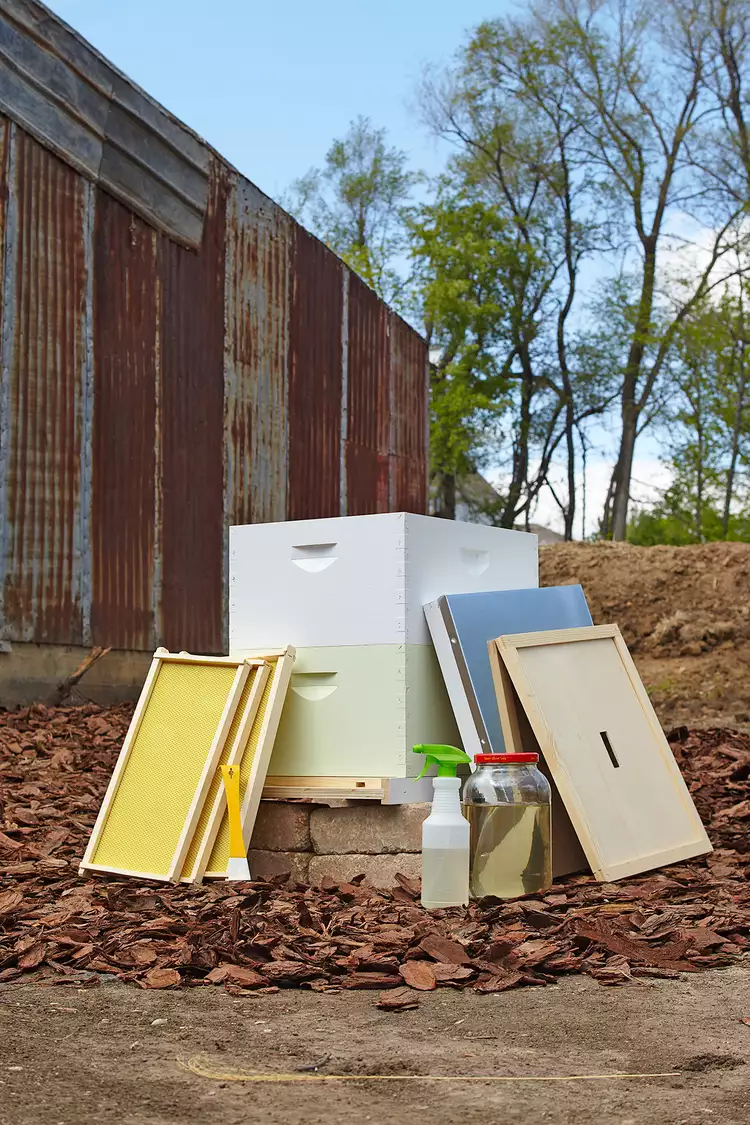The first challenge is deciding where to put your hive—then you need to assemble it. All the essential equipment, including hive parts, the smoker, and the hive tool, can be bought in a kit purchased online from a mail-order supplier. It's best to start with new equipment to avoid any hidden problems.
About Beehives
The most popular hive, the Langstroth, was invented in 1852 by apiarist Lorenzo Langstroth, aka the father of American beekeeping. It lets you harvest honey with minimal bee disturbance. The structure includes a cinder block base, a bottom board that works as an entrance for worker bees, a brood box where the queen lays eggs, and supers, which are boxes with vertical frames (10 per super) where the bees build honeycomb. As the colony grows, beekeepers "super up" by adding supers. The inner cover provides ventilation; the outer one is the roof.
When you're buying bees, you're not just getting a dozen. For this particular hive, approximately 10,000 bees were provided by a local beekeeping supplier and transported in a wooden box—slightly larger than a shoebox with a mesh screen. Here's how to set up your hive to give your bees everything they need.
Step 1: Place Bees in Brood Box
Removing a few frames from the brood box makes room for the bees. Spraying the bees with sugar water was important to calm and prepare them for their transition into the hive. With a few firm shakes of the brood box, most of the bees will make their way into their new home.
Step 2: Replace Frames
After the bees have been placed into the brood box, start putting the frames back into the box. Put them in slowly to avoid hurting any of the bees. Place the last of the frames into the box.
Step 3: Place the Queen
A plug in one end of the queen's cage is replaced with a bit of marshmallow, ensuring that the worker bees will eat the treat while being exposed to the queen's pheromones and will learn to accept her before they release her. The cage is hung between two frames in the middle of the wooden box.
Step 4: Feed the Bees
The inner cover is set on top of the brood box. Feeding the bees with a 2:1 sugar-water solution is essential while they set up house. Tiny holes in the jar lid give the bees access to the liquid. Continue to feed them until they stop using the sugar-water solution and depend on the neighborhood's spring nectar flow instead.
Step 5: Finish Assembly
A second deep box shelters the feeder. Once the top of the hive is set in place, it is time to leave the bees on their own for three to five days. Return then to make sure the queen has been released.




















